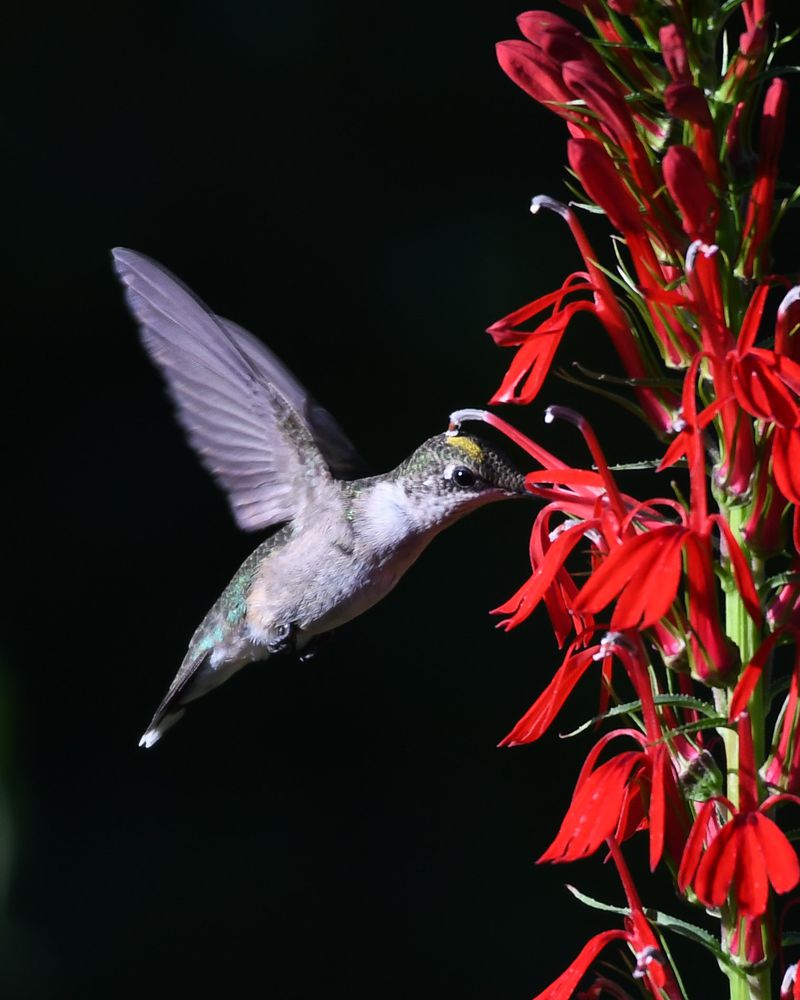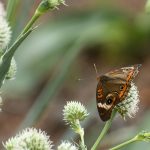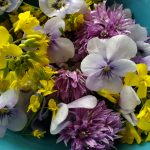Perfectly Paired: Hummingbirds and the Cardinal Flower
On the east coast, our native ruby-throated hummingbird is a beloved feathered friend of gardening and wildlife enthusiasts. It’s exciting to catch a glimpse of this colorful yet tiny little bird darting from flower to flower. You may not consider a hummingbird to be in the league of effective pollinators (like our native bees) but it deserves proper recognition.
Hummingbirds are specialized pollinating powerhouses for a handful of plants native to Virginia. Plants and animals have a long evolutionary history resulting in unique relationships where both species benefit. To secure the next generation, plants entice their dutiful pollinators with the sweet reward of nectar in exchange for the pollinator’s service.
The cardinal flower, Lobelia cardinalis, and the ruby-throated hummingbird are great examples of this mutualistic relationship. The cardinal flower’s spike of red tubular flowers grabs the bird’s attention, and each individual flower is exquisitely designed to make the most of the hummingbird’s visit. The anther, the male flower part that produces pollen, is perfectly positioned to brush up against the bird’s head as it goes in for nectar. With pollen grains securely deposited, the hummingbird takes off to visit the next flower and, hopefully, transfer the pollen it unknowingly collected.
To capitalize on the hummingbird’s visit, the individual flowers on a cardinal flower spike are staggered in their bloom sequence. The bottom flowers are the first to open. Initially, they feature only the male flower parts, the anthers, which produce and deposit pollen. As that flower matures, the anthers fade away and the female part of the flower that receives the pollen, the stigma, becomes active. As the hummingbird moves up and down the flower spike, there’s a good chance it will encounter a mix of male and female flowers, ensuring cross pollination occurs.
Look closely at the hummingbird’s head. You can see how the it lines up perfectly with the anthers. The yellow smudge is pollen. Photo courtesy of Tom Houser.
This relationship is so incredibly important that the continuation of this Lobelia species relies solely on pollination by the hummingbird. Bees just aren’t the right size and shape to come into contact with the flower’s reproductive parts. Butterflies are attracted to the flowers but they are not considered effective pollinators. Plus, butterflies prefer flowers that have a landing pad for them to rest on while they nectar. Hummingbirds and cardinal flowers are the perfect fit, proving nature’s innate ability to combine beauty with purpose!
Ruby–throated hummingbirds spend their winters in South America. They start the journey back to our area as their food sources start to bloom. Make your yard a hummingbird destination by adding a few of their favorite plants, like the cardinal flower, to your garden. You’ll enjoy this little bird’s feisty personality and delight in hearing their “hum.”






